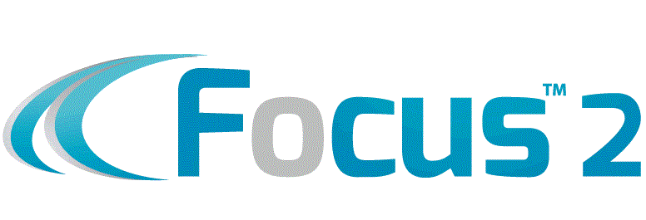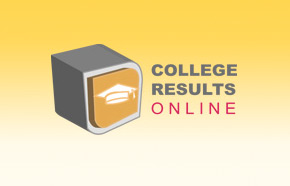Higher Ed Tax Guide for 2009
Higher Education Federal Tax Benefits Guide - 2009 Tax Year
There's great news for parents and students: the federal government provides a number of tax incentives that can help defray the cost of higher education. These incentives come in a couple of forms:
Tax credits, which directly reduce the amount of tax you are liable for; and Tax deductions, which reduce the amount of income that you pay taxes on.
You may qualify to use more than one of the benefits, but there are some restrictions against this as well. It's a good idea to figure your taxes multiple ways so you can get the maximum benefit available to you.
- Tax Credits
- The American Opportunity Tax Credit
- The Hope Tax Credit
- The Lifetime Learning Tax Credit
- How to Claim Tax Credits
- Tax Deductions
- Tuition and Fees Deduction
- Student Loan Interest Deduction
- More Tax Topics
- The 1098-T Statement
- Taxability of Educational Assistance
The American Opportunity Tax Credit
The American Opportunity tax credit is new for the 2009 tax year. It offsets the cost of tuition, fees, course-related books, supplies, and equipment for higher education by reducing the amount of income tax you are liable for. In addition, the credit is partially refundable—meaning that you may be able to claim the tax credit and receive a check from the IRS even if you owe no income tax!
The amount of the credit can be up to $2,500 per student. Up to $1000 of the credit can be refunded to you if your credit is more than the amount of tax you owe. You are eligible for the credit if your modified adjusted gross income is $90,000 or less (for married couples filing a joint return, $180,000 or less). The amount of the credit varies depending on income and how much you spent on higher education expenses, and how many eligible students are in your family.
The American Opportunity tax credit is a temporary replacement, for 2009 and 2010 only, for the Hope credit. It has more generous benefits than the Hope credit and was authorized by the economic stimulus bill, the American Recovery and Reinvestment Act of 2009.
Qualifications:
Expenses that count towards this credit are tuition, fees, course-related books, supplies, and equipment for higher education (less the amount of certain scholarships and grants received) during 2009 for yourself, your spouse, or someone whom you claim as a dependent on your tax return.
Only expenses incurred for the first four years of undergraduate study count for purposes of this credit. The student must have been enrolled at least half-time in 2009 in an eligible program leading to a degree, certificate, or other recognized credential at an eligible* school.
You must file a federal income tax return to get the credit (even if you are otherwise not required to file a return). If you are claimed as a dependent on someone’s tax return, only the person who claims you can apply for the credit. If you are not claimed as a dependent on someone else’s return, but were under age 24 at the end of 2009 and your earned income was less than one-half of your support, you can claim the credit to reduce any tax you owe, but are not eligible to get any refund.
Students convicted of a felony for possessing or distributing a controlled substance are not eligible for the American Opportunity tax credit.
The Hope Tax Credit
Because the Hope credit was temporarily replaced for the 2009 tax year by the American Opportunity tax credit, only families which have at least one student attending an eligible* institution in a Midwestern disaster area can claim a Hope credit.
The amount of the credit can be up to $3,600 per student, but it is non refundable— the maximum credit that you can receive is limited to the amount of tax you owe. Eligible families can take this credit only if they choose not to claim the American Opportunity credit for any student in the family. The maximum Hope credit for other students in the family, if they do not attend school in a Midwestern disaster area, is $1800. You are eligible for the credit if your modified adjusted gross income is $60,000 or less (for married couples filing a joint return, $120,000 or less). The amount of the credit varies depending on income and how much you spent on higher education expenses, and how many eligible students are in your family.
Qualifications:
Expenses that count towards this credit are tuition, fees, course-related books, supplies, equipment, and a room and board allowance (less the amount of certain scholarships and grants received) paid during 2009 for yourself, your spouse, or someone whom you claim as a dependent on your tax return who attended a school in a Midwestern disaster area. Other students in the family can only claim tuition, fees, and amounts required to be paid to the institution for books, supplies and equipment if they didn't attend school in the Midwestern disaster area.
The expenses must have been incurred for the one of the first two years of undergraduate study, and the student must have been enrolled at least half-time in 2009 in an eligible program leading to a degree or certificate at an eligible school.
You must file a federal income tax return and have a 2009 income tax liability of any amount to get the credit. If you are claimed as a dependent on someone’s tax return, only the person who claims you can apply for the credit.
You may only take a Hope credit for two years for any one student. If you have already claimed the Hope credit in two previous tax years for a student, that student may qualify for the American Opportunity tax credit.
Students convicted of a federal or state drug felony before the end of 2009 are not eligible for the Hope credit.
The Lifetime Learning Tax Credit
The Lifetime Learning credit is available for all types of post secondary education, unlike the other credits. Use the Lifetime credit once you have exhausted your eligibility for more advantageous credits. This credit may be particularly helpful to graduate students.
You can claim a tax credit of up to $2000 per tax return (not per student). The maximum is $4,000 if at least one family member was a student in a Midwestern disaster area school. The qualifying student(s) can be anyone in the family. The Lifetime Learning credit is non refundable— the maximum credit that you can receive is limited to the amount of tax you owe. You are eligible for the credit if your modified adjusted gross income is $60,000 or less (for married couples filing a joint return, $120,000 or less).
Qualifications
Expenses that count towards this credit are tuition, fees, and amounts required to be paid to the institution for books, supplies and equipment (less the amount of certain scholarships and grants received) during 2009 for yourself, your spouse, or someone whom you claim as a dependent on your tax return. If a student attended school in a Midwestern disaster area, other expenses may be included.
You don't have to be pursuing a degree or certificate to qualify for the Lifetime Learning Credit. You can claim it for all years of post secondary education and for courses to acquire or improve job skills.
You must file a federal income tax return and have a 2009 income tax liability of any amount to get the credit. If you are claimed as a dependent on someone’s tax return, only the person who claims you can apply for the credit.
If you claim the American Opportunity credit or the Hope credit for one or more students in your family, you can't use their expenses to figure your Lifetime Learning Credit. You can still take a Lifetime Credit for family members for whom you are not claiming the other credits.
Unlike other credits, students who have felony drug convictions do qualify to take the Lifetime Learning credit.
How to Claim Tax Credits
To claim any of the three tax credits, you must report the amount of your qualified expenses (less certain scholarships, grants, and untaxed income) on IRS Form 8863 - Education Credits. Complete instructions for using this form and more details are available from the IRS.
Tuition and Fees Tax Deduction
The Tuition and Fees tax deduction can reduce your taxable income by as much as $4,000. This deduction may be helpful to you if you are not eligible to take one of the tax credits. It is taken as an adjustment to income, which means you can claim this deduction even if you do not itemize deductions on Schedule A of Form 1040.
You are eligible to take the deduction if your modified adjusted gross income is $80,000 or less ($160,000 if filing a joint return). The amount of the Tuition and Fees deduction you are eligible for depends on the amount of qualified tuition and related expenses paid for eligible students.
Qualifications:
Expenses that you can deduct are tuition, fees, and amounts required to be paid to the institution for books, supplies and equipment (less the amount of certain scholarships and grants received) during 2009 for yourself, your spouse, or someone whom you claim as a dependent on your tax return. The expenses must have been for a student enrolled in one or more courses at an eligible* educational institution.
You can't claim both an education credit and the tuition and fees deduction for the same student for the same year, but you can take the deduction for one student and a credit for another.
You can't take this deduction if you deduct tuition and fees expenses under any other provision of the law (for example, as a business expense).
You can't claim this deduction if your filing status is married filing separately or if another person can claim you as a dependent on his or her tax return.
Figure your Tuition and Fees deduction on IRS Form 8917 - Tuition and Fees Deduction.
Student Loan Interest Deduction
The Student Loan Interest tax deduction can reduce your taxable income by as much as $2500. It is taken as an adjustment to income, which means you can claim this deduction even if you do not itemize deductions on Schedule A of Form 1040.
You can deduct interest paid on a student loan for yourself, your spouse, or your dependents. You are eligible to take the deduction if your modified adjusted gross income is $75,000 or less ($150,000 if filing a joint return). The amount of the Student Loan Interest deduction you are eligible for depends on the amount of interest paid and your income.
Qualifications:
Qualified student loans must have been used to fund educational expenses such as tuition, room and board, fees, and books for a student enrolled at least half-time and pursuing a degree, certificate, or similar program at an eligible* institution.
You cannot claim this deduction if your filing status is married filing separately or if another person can claim you as a dependent on his or her tax return.
Figure your Student Loan Interest deduction using the Student Loan Interest Deduction Worksheet.
The 1098-T Statement
You will receive information about your 2009 educational expenses in a 1098-T statement from the institution of higher education. Schools are required to send this information to each student and to the IRS by Jan. 31, 2010. (You might receive this by mail or electronically. Be sure to save this information, or give it to the person who claims you on their tax return if you don't claim yourself.)
Some schools report only tuition and fees on this form. If your 1098-T doesn't include amounts you paid for course-related books, supplies, and equipment, and these expenses are allowed for the credit you are taking, you can use your own records to figure the amounts paid for these items and report the total on your tax return.
Taxability of Student Financial Aid and Loan Forgiveness Programs
Scholarships, fellowships, and grants that you received and that are reported on the 1098-T may need to be reported as taxable income in certain circumstances, but are often tax-free. In general, if you are pursuing a degree, certificate, or program of training towards gainful employment, and used the funds to pay tuition, fees, or required books, supplies and equipment, these sources of assistance are not counted as taxable income.
If you've received a student loan that states it can be forgiven, cancelled, or paid if you work for a certain period of time, in certain professions, for any of a broad class of employers, then the amounts forgiven may qualify for tax-free treatment.
*An eligible educational institution is any college, university, vocational school, or other post secondary educational institution eligible to participate in a student aid program administered by the U.S. Department of Education. According to the IRS, "it includes virtually all accredited, public, nonprofit, and proprietary post secondary institutions." The educational institution should be able to tell you if it is an eligible educational institution. Certain educational institutions located outside the United States also participate in the U.S. Department of Education’s Federal Student Aid (FSA) programs.
*Please consult with your CPA or other professional before implementing any of these ideas





